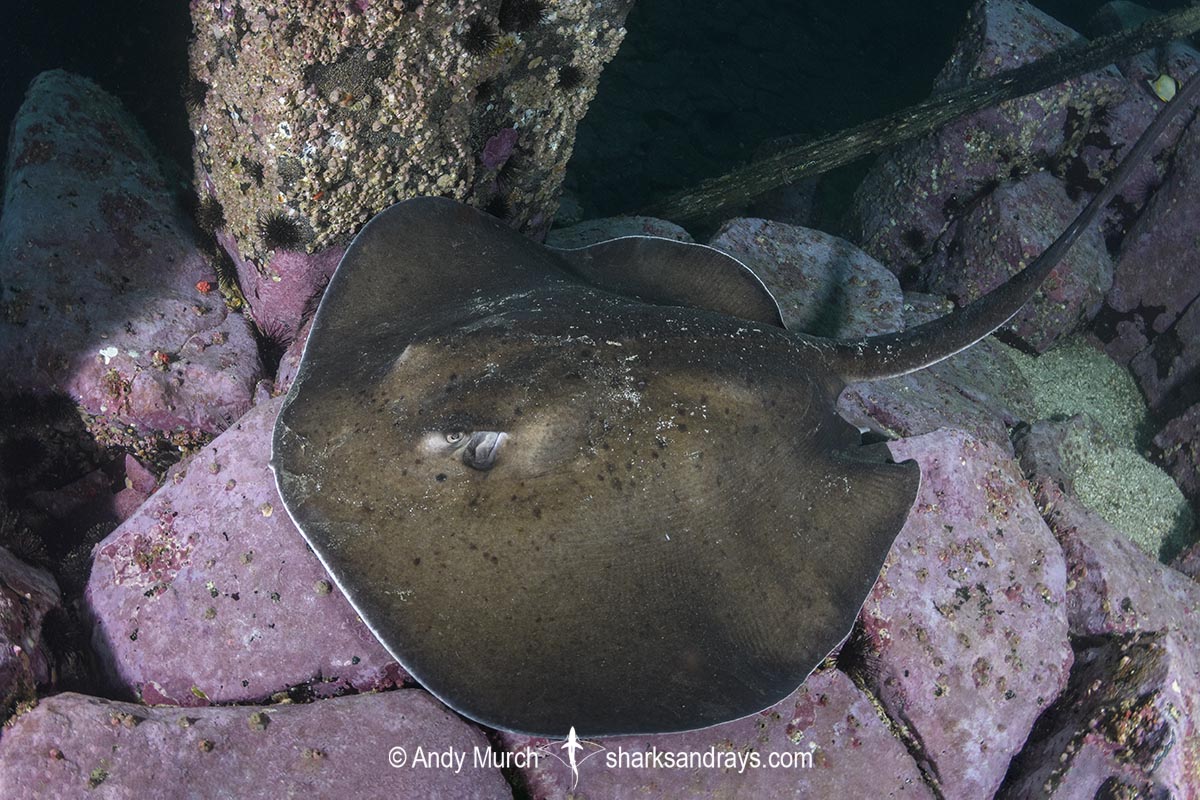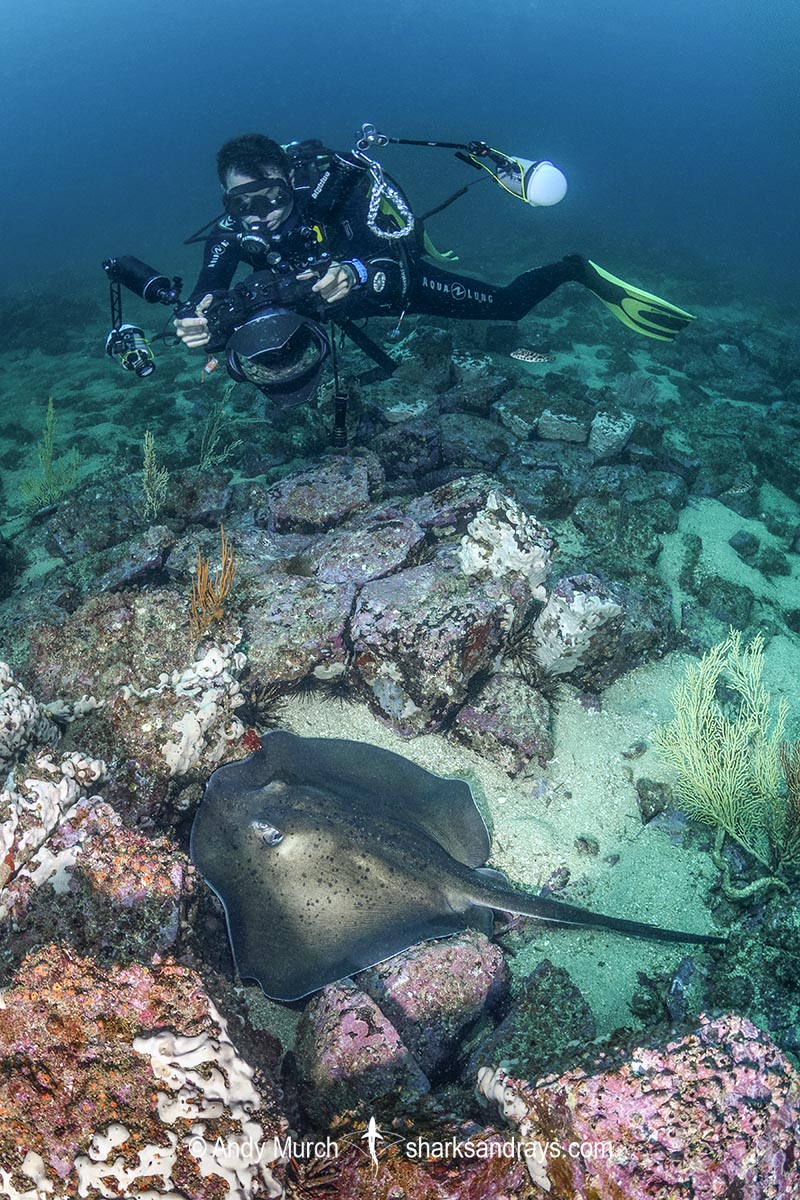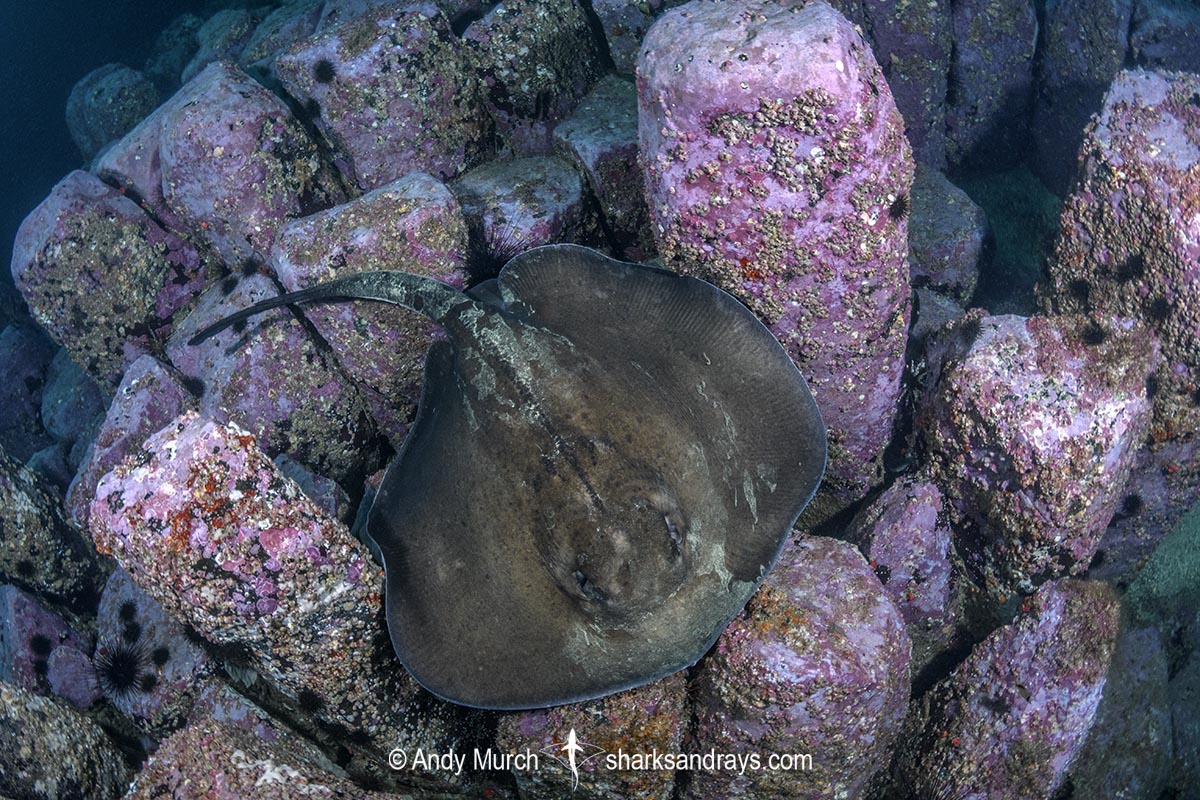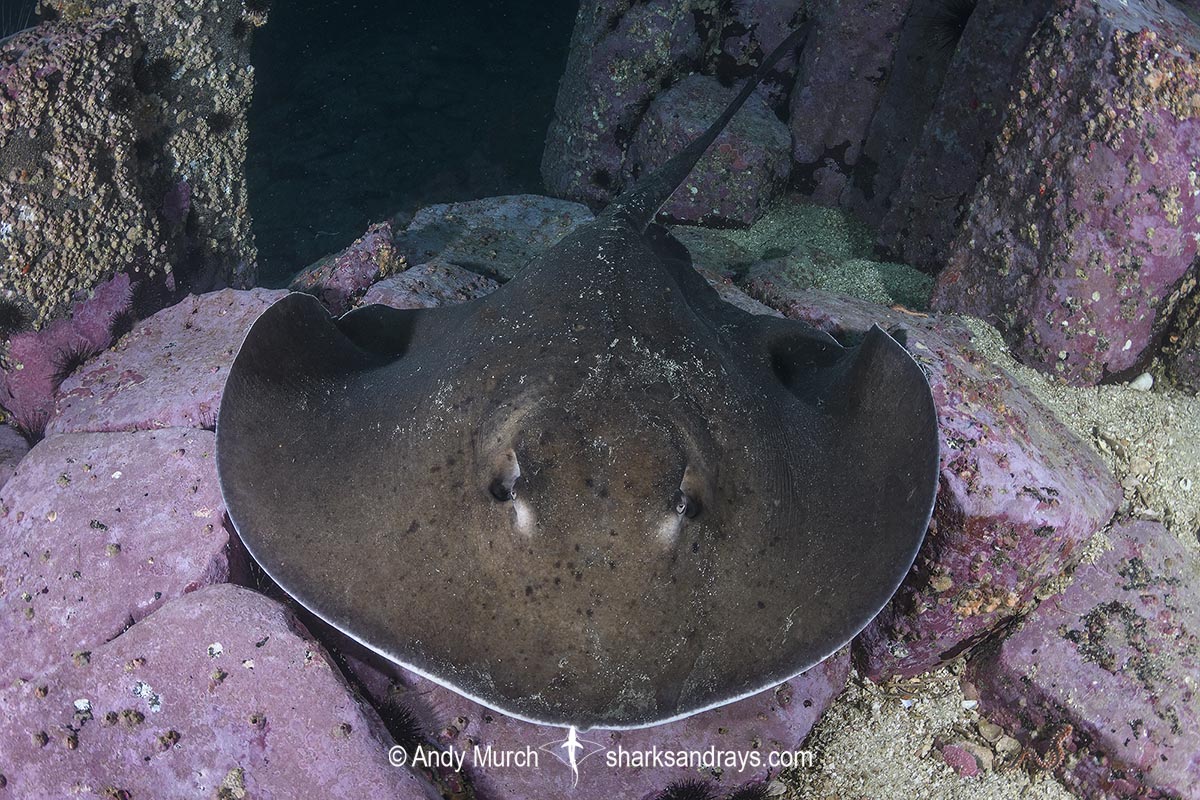Common name(s)
Round Stingray, Round Fantail Ray.
Identification
A fairly large stingray with a sub-circular disc that is very slightly wider than long. Snout fairly long, and obtusely angular, with a slightly extended, apical lobe. Anterior margins of disc convex. Pectoral fin apices broadly rounded. Pelvic fins short; apices narrowly rounded.
Eyes small. Snout length 2.2 x combined eye and spiracle length. Mouth small. Prominent labial furrows and papillae around mouth. Lower jaw concave at symphysis. Skirt-shaped nasal curtain short, wide, and heavily fringed. Nostrils small and oval.
Patch of denticles and low thornlets on nape, back, and tail. Tail narrow and short; slightly longer than disc width. Tail tapers to caudal sting then thins slowly to tip. Narrow ventral finfold extends to tip of tail; finfold height slightly less than tail height beyond caudal sting. Dorsal finfold absent. One long caudal sting usually present.
Colour
Dorsum tan to mid-brown darkening towards disc margin. Sometimes with scattered dark specks and spots. Tail beyond caudal sting fades to brownish-black. Ventral finfold dark.
Size
Maximum disc width at least 100cm. Reports of 2.5m wide individuals may be misidentifications. Disc width at birth unknown.
Habitat
Tropical to warm-temperate seas. On sandy substrates, often adjacent to reefs. From inshore to approximately 100m.
Distribution
Eastern Atlantic (southern France to Angola), southern Mediterranean, and possibly the Red Sea.

Conservation Status
DATA DEFICIENT
The Round Fantail Stingray (Taeniurops grabatus) is vulnerable to capture in demersal trawl and trammel net fisheries, although no specific information is currently available on its capture. At present insufficient information is available to assess the species beyond Data Deficient and this assessment should be revisited as soon as information becomes available.

Reproduction
Matrotrophic viviparity. Litter size unknown.
Diet
The round stingray feeds on small benthic fishes and crustaceans.
Behavior
Sedentary. Rests under ledges and caves during the day.
Reaction to divers
Fairly easy to approach but will retreat deeper into hiding place if disturbed.
Diving logistics
The Round Stingray is frequently encountered while diving around the Canary Islands. Many dive shops should be able to show you sites where this species occurs. I photographed this ray near Arinaga on Grand Canaria. Another good place to find this species may be the stingray feed at Los Gigantes on Tenerife, although I did not see this species when I dove there.
What’s new
View our full list of updates
Similar species
Blotched Fantail Ray Distinguishable by generally larger size and more mottled appearance.









